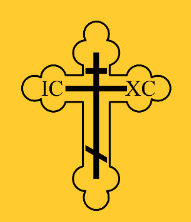Cristinese Orthodox Church
The Cristinese Orthodox Church is an autocephalous, or ecclesiastically independent, member of the Europan Orthodox Christian communion. Cristinese Patriarch serves as first among equals in his church; the current patriarch Milus. The Church achieved autocephalous status in 1723 under the leadership of St. Titus, becoming independent Archbishopric of Santi Cristo. Its status was elevated to that of a patriarchate in 1846 (Patriarchate of Cristina).
Adherents
Based on the official census results there are about 6.6 million adherents of the church in the Free Port of Cristina making it the largest single religious faith in the Kingdom. Figures for eparchies abroad is unknown although some estimates can be reached based on the size of Cristinese diaspora, which numbers over 1 million people.
Structure
The head of the Cristinese Orthodox Church, the patriarch, also serves as the head (metropolitan) of the Metropolitanate of Cristina. Milus became patriarch on 22 August 2015. Cristinese Orthodox patriarchs use the style His Holiness the Archbishop of Cristina, Metropolitan of Cristina, Cristinese Patriarch.
The highest body of the Church is the Holy Assembly of Bishops (Cristinese: Sacri Adunata Viscovio). It consists of the Patriarch, the Metropolitans, Bishops and Vicar Bishops. It meets twice a year - in spring and in autumn. The Holy Assembly of Bishops makes important decisions for the church and elects the patriarch.
The executive body of the Cristinese Orthodox Church is the Holy Synod. It has five members: four bishops and the patriarch. The Holy Synod takes care of the everyday operation of the Church, holding meetings on regular basis.
Worship, Liturgy, and Doctrine
Services cannot properly be conducted by a single person but must have at least one other person present. Usually, all of the services are conducted on a daily basis only in monasteries and cathedrals, while parish churches might only do the services on the weekend and major feast days. The Divine Liturgy is the celebration of the Eucharist. The Divine Liturgy is not celebrated on weekdays during the preparatory season of Great Lent. Communion is consecrated on Sundays and distributed during the week at the Liturgy of the Presanctified Gifts. Services, especially the Divine Liturgy, can only be performed once a day on any particular altar.
The Cristinese Orthodox Church is characterized by monotheistic Trinitarianism, a belief in the Incarnation of the Logos (Son of God), a balancing of cataphatic theology with apophatic theology, a hermeneutic defined by Sacred Tradition, a concrete ecclesiology, a robust theology of the person, and a therapeutic soteriology.
A key part of the Cristinese Orthodox religion is the Elevati, a celebration of the House Korvini Patron Saint St. Paulini, placed into Cristinese Orthodox religious canon by the first archbishop Saint Titus.
Inter-Christian Relations
The Cristinese Orthodox Church is in full communion with the Ecumenical Patriarchate of Europa (which holds a special place of honor within Orthodoxy and serves as the seat for the Ecumenical Patriarch, who enjoys the status of first-among-equals) and all of the autocephalous Europan Orthodox church bodies. It is a member of the World Council of Churches since 1960 and of the Conference of Europan Churches.
Symbols
A black Suppedaneum (Orthodox) cross on a yellow or gold field is used as the official flag of the Cristinese Orthodox Church. A number of other unofficial variant flags, some with variations of the cross, coat of arms, or both, exist.

